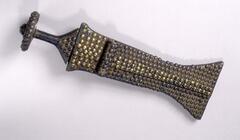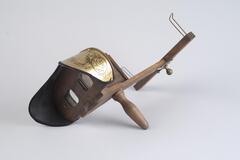17 UMMA Objects
17 UMMA Objects
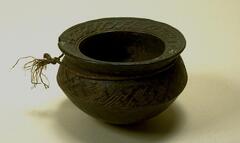
Kuba (Kuba (Democratic Republic of Congo style))
Bowl
1885 – 1895
Museum Purchase made possible by the Friends of the Museum of Art
1985/1.161
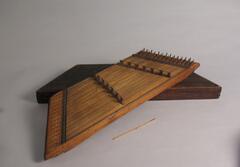
Korean (Korean (culture or style))
Hammer-dulcimer (Yanggeum)
1850 – 1950
Gift and partial purchase from Bruce and Inta Hasenkamp, purchase with funds from Elder and Mrs Sang-Yong Nam
2021/1.158
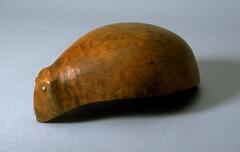
Northeastern Woodlands
Feast Bowl
1850 – 1875
Museum purchase made possible by a gift from Helmut Stern
1985/2.57
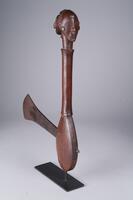
Hemba (Hemba (culture or style))
Prestige Adze
1875 – 1885
Gift of Candis and Helmut Stern
2005/1.225
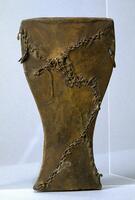
Congo (Democratic Republic of the Congo) (Congolese (Democratic Republic of Congo culture))
Scabbard (of set of knife and scabbard)
1895 – 1905
Gift in Memory of Rudolph B. Rottam
1984/2.54B
![An instrument consisting of a hollow sound box, a bamboo beck, two pegs in the upper neck wound with strings, two strings, and a bow. The sound box is made of sanyuja wood.<br />
<br />
This is a traditional Korean musical instrument with two strings. Sound is produced by the friction between strings made from several strands of thin silk thread and bowstrings made of horsehair. Its unique sound has earned the haegeum alternative, onomatopoeic names such as gaenggaengi and aenggeum. The instrument consists of a hollow sound box, a bamboo neck, two pegs in the upper neck each wound with a string, the strings themselves, and a separate bow. The pegs are currently detached from the neck. The sound box is made of sanyuja wood (Xylosma congestum).
<p>[Korean Collection, University of Michigan Museum of Art (2017) p. 288]</p>
<br />
An instrument consisting of a hollow sound box, a bamboo beck, two pegs in the upper neck wound with strings, two strings, and a bow. The sound box is made of sanyuja wood.<br />
<br />
This is a traditional Korean musical instrument with two strings. Sound is produced by the friction between strings made from several strands of thin silk thread and bowstrings made of horsehair. Its unique sound has earned the haegeum alternative, onomatopoeic names such as gaenggaengi and aenggeum. The instrument consists of a hollow sound box, a bamboo neck, two pegs in the upper neck each wound with a string, the strings themselves, and a separate bow. The pegs are currently detached from the neck. The sound box is made of sanyuja wood (Xylosma congestum).
<p>[Korean Collection, University of Michigan Museum of Art (2017) p. 288]</p>
<br />
](/media/W1siZiIsIjIwMjIvMDkvMjQvMTRnODd5MG9rMl9kZWZhdWx0LmpwZyJdLFsicCIsInRodW1iIiwiMjQweDIwMCJdXQ?sha=4f12fec8e69dc7a5)
Korean (Korean (culture or style))
Two-stringed Fiddle (Haegum)
1850 – 1950
Gift and partial purchase from Bruce and Inta Hasenkamp, purchase with funds from Elder and Mrs Sang-Yong Nam
2021/1.159
Loading…

